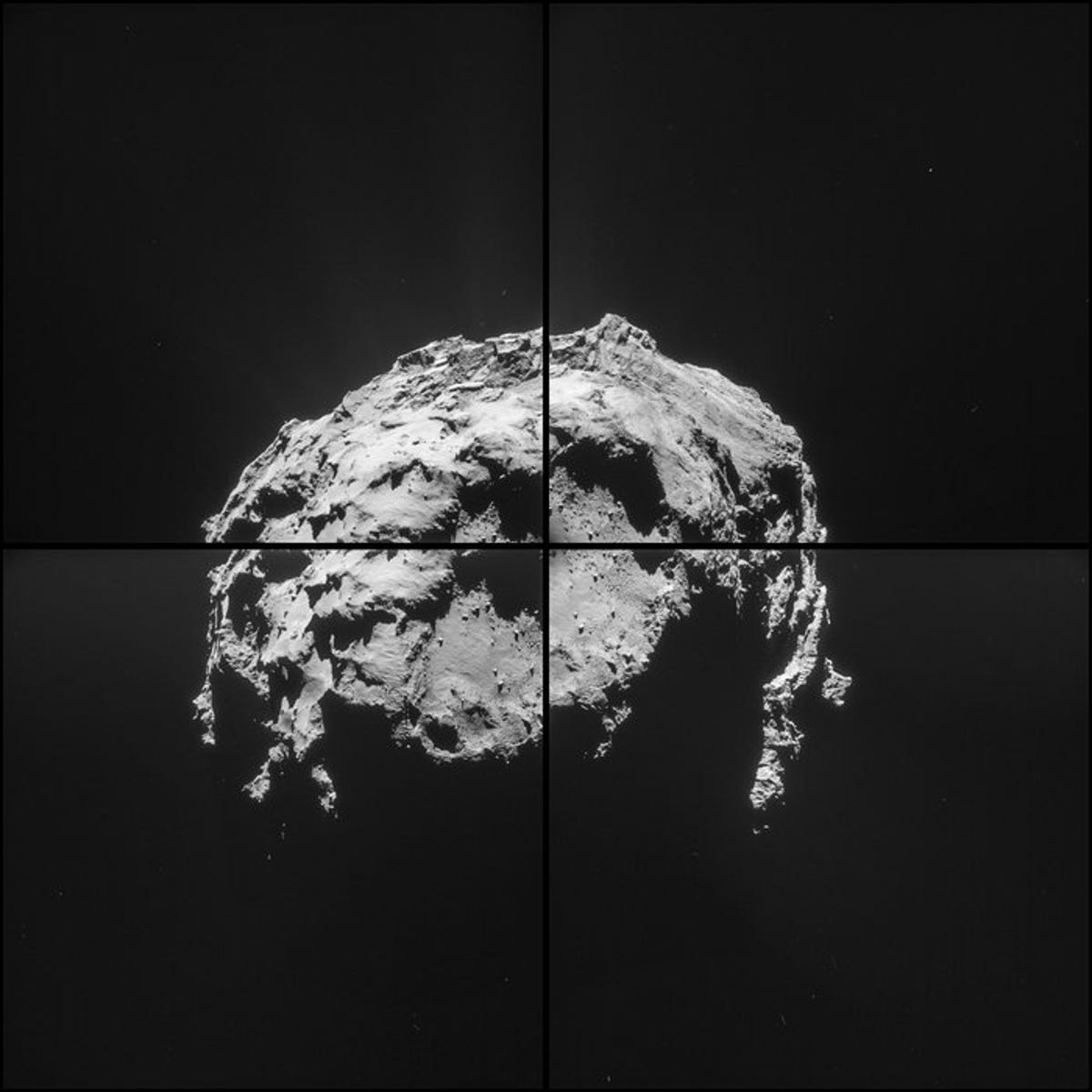Rosetta zooms in on fascinating comet (pictures)
A close flyby brought the Rosetta spacecraft to within just a few miles of the surface of Comet 67P for an eye-opening view of its boulder-littered surface.

Small lobe of Comet 67P
The European Space Agency's Rosetta spacecraft moved in close to Comet 67P/Churyumov-Gerasimenko on February 14, 2015, capturing a series of intriguing images.
This montage is made up of four images taken at a distance of around 22 miles away. It shows the Hatmehit depression located on the comet's small lobe.
Related article: Rosetta buzzes comet for close-up of craggy surface
Comet close-up
This mosaic is made up of images taken when Rosetta was about 8 miles away from Comet 67P's center. The comet itself is about 2.5 miles in diameter.
Related article: Rosetta buzzes comet for close-up of craggy surface
Close-up of the comet surface
This close-up image shows the surface of Comet 67P/Churyumov-Gerasimenko from a distance of about 5.5 miles. It was captured during a flyby of the comet. The area here is called the Imhotep region and it is located on the comet's large lobe.
Related article: Rosetta buzzes comet for close-up of craggy surface
Snuggling up to a comet
The European Space Agency's Rosetta mission conducted a very close flyby of Comet 67P in order to study the surface features more closely. The image shows a portion of the comet's large lobe. Researchers are able to see boulders and other formations more clearly through the close-up images.
Related article: Rosetta buzzes comet for close-up of craggy surface
Comet flyby image
This close-up image of the large lobe of Comet 67p was captured when Rosetta was just under 8 miles away from the comet's center. The dark section near the top indicates part of the "neck" between the comet's two lobes.
Related article: Rosetta buzzes comet for close-up of craggy surface
Lobes of the comet
This montage of images taken by the Rosetta spacecraft was captured near the end of a close flyby. Rosetta was nearly 20 miles away from the comet's center when these were captured. At its closet during the flyby, the spacecraft was less than 4 miles from the comet.
Related article: Rosetta buzzes comet for close-up of craggy surface
Closing in on Comet 67P
This image was taken with the Navcam on the Rosetta spacecraft at a distance of around 65 miles from Comet 67P. The large lobe of the comet towers behind the small lobe in the foreground. This was taken several days before Rosetta moved in close for a flyby to capture detailed images of part of the comet's surface.
Related article: Rosetta buzzes comet for close-up of craggy surface
Comet exudes dust and gas
Jets of dust and gas extend outward from Comet 67P in this image taken by the European Space Agency's Rosetta spacecraft. The image was adjusted to highlight the activity from the comet's surface.
Related article: Rosetta buzzes comet for close-up of craggy surface
True color of a comet
In late 2014, there was a considerable amount of discussion about what Comet 67P/Churyumov-Gerasimenko would look like in a color image. As it turns out, the comet is very much gray. There are some very slight color variations across the surface, but the comet overall doesn't look much different than it does in black-and-white images.
Related article: Rosetta buzzes comet for close-up of craggy surface
Dust jets emanate from comet
This image of Comet 67P/Churyumov-Gerasimenko has been deliberately overexposed to highlight the dust and gas jets emanating from the surface. Both lobes of the irregularly shaped comet are visible.
Related article: Rosetta buzzes comet for close-up of craggy surface
Zooming in on a comet
The Rosetta mission took an opportunity to fly in close to the comet it has been studying since arriving in orbit around the space object in 2014 after a 10-year chase. At its closest, Rosetta passed about 3.7 miles from the comet's surface. Images were captured by an onboard camera and sent back to researchers on Earth to offer a close view of the comet's craggy features.
Related article: Rosetta buzzes comet for close-up of craggy surface

